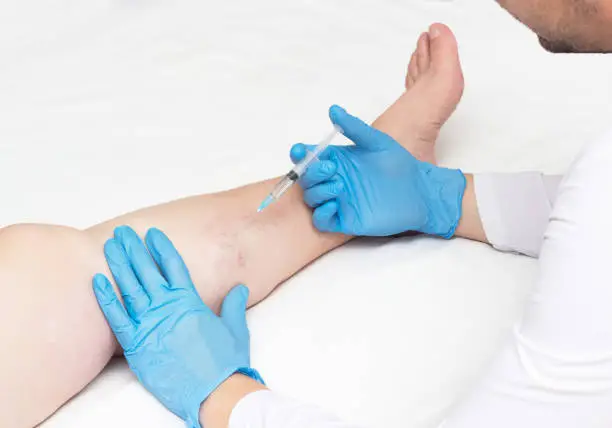
The conditions
Spider veins and varicose veins are both common conditions that affect the veins in the legs. There are some key differences between the two, although both conditions can cause pain and discomfort.
Spider veins are small, thin veins that are visible through the skin. They are usually blue or purple in color and can appear in clusters, often in a web-like pattern. Spider veins are usually found on the legs and ankles, but can also show up on the face. They are caused by weakened valves in the veins, which allow blood to pool and cause the veins to become visible. Varicose veins, on the other hand, are larger, swollen veins that are often raised and lumpy. They can range in color from blue to purple, and are usually found on the legs and ankles. Varicose veins are caused by a weakening of the vein walls, which allows blood to pool. This causes the veins to become enlarged.
Differences
The main difference between spider veins and varicose veins is the size of the veins. Spider veins are much smaller than varicose veins and are visible through the skin. Varicose veins, on the other hand, are larger and can be seen through the skin.Another difference between the two conditions is the amount of pain and discomfort they cause. Spider veins typically cause little to no pain, while varicose veins can be quite painful. Varicose veins can cause aching, throbbing, and burning sensations, as well as swelling and fatigue.
Finally, the treatments for the two conditions are different. Spider veins can often be treated with laser treatments, sclerotherapy, or compression stockings. Varicose veins, on the other hand, may require more invasive treatments, such as surgery or endovenous laser ablation.In conclusion, spider veins and varicose veins are two different conditions that affect the veins in the legs. While both conditions can cause pain and discomfort, there are some key differences between the two. Whilst varicose veins can be quite painful and require more invasive treatments, spider veins are much smaller than varicose veins and usually cause little to no pain.
Spider veins
Spider veins are an unwelcome but common aesthetic problem, usually appearing as small, thin red, blue, or purple veins that resemble a spider’s web and often found on the legs, face, and other areas of the body. While not necessarily a medical issue, those with spider veins may experience some discomfort. Fortunately, there are a variety of treatments available to help reduce the appearance of spider veins and restore your skin to its healthy, glowing state.
Spider vein treatment
Sclerotherapy is the most common treatment for spider veins and involves injecting a solution into the affected veins, causing them to collapse and fade away. This is a relatively quick and painless procedure, with many people able to return to normal activities right away. Laser therapy is another popular option in which a laser is used to heat and destroy the unwanted veins. This is a quick and generally painless procedure done in the doctor’s office. Endovenous ablation may be prescribed for more severe cases, using radiofrequency or laser energy to heat and seal off the affected veins, but this is a more invasive procedure with more recovery time.
For those looking for a more conservative approach, compression stockings can help reduce the appearance of spider veins by increasing circulation and reducing swelling. Other natural remedies include taking certain vitamins or supplements, exercising regularly, and avoiding sitting or standing for long periods of time. No matter which treatment you opt for, it’s important to consult your doctor to determine which one is best for you, as it may require a combination of treatments to get the desired results. Don’t let spider veins get the best of you – with the right treatment, you can feel confident again and show off that healthy, glowing complexion.
Varicose veins
Varicose veins are a common condition that affects up to 25 percent of adults. They are enlarged, swollen veins that can be seen just beneath the surface of the skin. They usually appear in the legs and feet, but can also be found in other areas of the body. Varicose veins are caused by weakened valves and walls in the veins. This allows blood to pool in the veins, causing them to swell and twist. They are more common in women, and are often hereditary. Pregnancy, obesity, and standing or sitting for long periods of time can also increase the risk of developing varicose veins.
The main symptom of varicose veins is aching or heavy legs. Other symptoms include swelling, itching, burning, cramping, and discoloration of the skin around the veins. In some cases, varicose veins can also lead to leg ulcers. If you are experiencing any of these symptoms, it is important to see a doctor. Your doctor may recommend lifestyle changes, such as losing weight, exercising more, and wearing compression stockings. In some cases, surgery may be necessary to remove the veins. Varicose veins can be unsightly, but they are generally harmless. With proper treatment and lifestyle changes, you can reduce your risk of developing more varicose veins.
